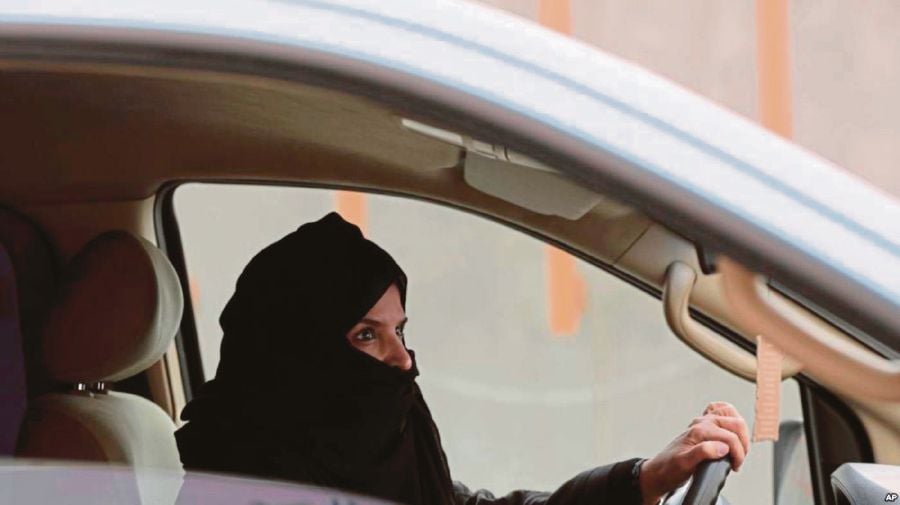IT is some 132 years since Karl Benz invented the first modern automobile in 1886, albeit there were a motley of strange forerunners. So much has been said about men and their cars — that the latter, for instance, are an extension of men’s egos.
Indeed, some men’s egos have been dented given that women, too, have had a long historical relationship with the automobile. Two years later in 1888, Benz’s business partner and wife Bertha Ringer became the first person, let alone woman, to drive an automobile over a long distance from Manheim to Pforzheim in Germany.
In England, a good 11 years later, it was the turn of actress Minnie Palmer to become the first woman to drive and own her own car, a French-made Rougemont automobile. To further underline women’s long historical relationship with the motor car, it was Alabama-born Mary Anderson who invented and patented the windscreen wiper, which by 1916 became a standard feature of most automobiles.
So, when the ban on women driving in Saudi Arabia finally came to an end on Sunday (June 25), any euphoria as to the empowerment of Saudi women should be put into perspective, given that they are only enjoying a human right, which their fellow women in other countries have been taking for granted for some 130 years. This clearly shows the massive socio-cultural catch up the kingdom has to achieve in the area of gender attitudes, parity and empowerment.
Spare a thought for Manal Al-Sharif, who started the Women2Drive campaign in Saudi Arabia in 2011 after having argued for a change in the law two decades earlier. Her “reward” was imprisonment after posting a YouTube video of herself driving a car.
The fact that such a simple issue has been complicated by hitherto justifying the ban on religious grounds — a justification which the overwhelming part of the Muslim world, including Malaysia, have emphatically rejected — suggests that this issue despite the very belated lifting of the ban has the potential to push back.
After all, there are several conservative men and religious scholars in the kingdom who are not amused at the decision of King Salman and his son Crown Prince Mohammed Bin Salman (MBS) last September to allow women to drive.
There must be some doubt as to whether the kingdom is institutionally prepared to sustain the lifting of the ban effectively, given that other basic rights such as women applying for a passport, travelling abroad, marrying, getting a divorce, opening a bank account, getting a job or even consenting to some medical interventions, without the permission from a male family member such as a father, husband or brother, remain elusive.
So, when the likes of UN Secretary General Antonio Guterres tweeted that it is “an important step in the right direction”, those who support women’s rights in the kingdom will take such sentiments with a pinch of salt.
Having written about and followed developments in Saudi Arabia for more than three decades, I have realised that change happens extremely slowly because there are so many affiliations to contend with, including royal familial, tribal, religious, economic, bureaucratic and cultural. After all, the political reality is that the kingdom remains a form of absolute monarchy, bereft of periodic elections as we know them in London or Kuala Lumpur.
The House of Salman, which de facto has replaced the House of Saud and which is effectively led by the scion MBS, has moved incredibly quickly with a reform agenda — as if he, armed with the Saudi Vision 2030, is keen on fast-tracking the kingdom into the 21st century.
The Saudi Vision 2030, conjured up with the assistance of United States consulting firms, is a package of social and economic policies that are designed to free the kingdom from dependence on oil exports and to build a prosperous and sustainable economic future by focusing on the country’s strength and policies.
Of the 24 goals set for Saudi Vision 2030, there is only one, which exclusively pertains to women — “to increase women’s participation in the workforce from 22 per cent to 30 per cent”. This, for a country whose total population of 35.5 million is roughly divided between 50.5 per cent male and 49.5 per cent female.
Not surprisingly, international human rights NGOs such as Human Rights Watch and Amnesty International are more cautious about the understandable euphoria showed by many Saudi women, some of whom have already been issued driving licences and others licences to operate driving schools for women, stressing that this is “just one step” forward, and that there are many things that women in Saudi Arabia still aren’t allowed to do. As such they, like most Saudi women, want the cornucopia of laws and practices, which discriminate against women in Saudi Arabia also to be scrapped.
This all boils down to the “liberalisation” instincts of MBS, who is already pre-occupied on several fronts including the Saudi-led war in Yemen, its strong support of President Donald Trump’s scrapping of the Iran Nuclear Deal, the continuation of the blockade and sanctions imposed on Qatar, and managing the Saudi economy in an era of much lower global crude oil prices.
The kingdom’s budget deficit for First Quarter 2018 totalled 34.33 billion riyal (RM36.74 billion), which is about 18 per cent of the expected annual deficit. Similarly, Saudi Arabia’s real gross domestic product (GDP) growth is projected at a modest 1.7 per cent over the medium term according to the latest International Monetary Fund (IMF) Article IV Consultation on Saudi Arabia in May 2018.
The lifting of the ban would contribute to GDP and save the economy 20 billion riyal in salaries and work permit fees of male expatriate drivers mainly from Bangladesh and India should their numbers be halved from the total 1.38 million. Local economists also stress that it could change spending and consumption behaviour, albeit the impact all round would be gradual.
The reality is that MBS is as unpredictable as they come. The lifting of the ban on women drivers comes amid an intensified crackdown on activists who campaigned for the right to drive. At least eight women’s rights activists, including the enigmatic Loujain al-Hathloul, are in detention and could face trial in a counter-terrorism court and long prison sentences for their activism.
Gender rights change in Saudi Arabia has come from several fronts. Whether they are expedient or transformative, only time will tell!
The writer is an independent London-based economist and writer
Get the latest World Cup 2018 scores, highlights and updates from our dedicated World Cup page






